Citadel: A Quest Within a Wizard's Tower is a fantasy board game published in 1976 by Fantasy Games Unlimited.
Contents
- Setting
- Description
- Gameplay
- Setup
- Search
- Combat
- Escape
- Victory Conditions
- Reception
- Reviews
- References

Citadel: A Quest Within a Wizard's Tower is a fantasy board game published in 1976 by Fantasy Games Unlimited.

An evil wizard has stolen an important talisman, and has hidden it somewhere in his six-level stronghold, the Citadel, which is guarded by minions. The Forces of Good send heroes into the Citadel to try and find the Talisman and escape with it.
Citadel was one of the first board games with modular play areas. [1]
Citadel is a two-player board game designed by Roy Goodman [2] and published by Fantasy Games Unlimited. The entire game is enclosed in a 14-page rulebook, which includes
The game is divided into three phases: Set-up, Search, and Escape.
One player chooses to be the Evil Wizard, and the other player represents the Forces of Good. The two players first agree on how many points they can spend on their respective sides. Reviewer Mike Westhead suggested that 350–450 points results in a two-hour game. [3] The evil set-up includes:
Maps: The player playing the Evil Wizard first chooses six of the mapsheets — either the front or back of each of the six map sheets — which will represent the six levels of the Citadel.
Talisman: On one of the maps, the player places the Talisman counter face-down.
Monsters: The player then allocates the agreed-upon points to his minions, choosing from a pool of 25-point humans, 35-point near-humans, 40-point monsters, and if desired, a single 50-point monster. Each one starts with 6 wound points, except the 50-point monster, which has 8 wound points. The chosen monsters are also placed on various places in the Citadel facedown.
Traps: The player can also place up to two sinkholes (10 points each), and up to three pitfalls (5 points each). The player cannot place the Talisman behind an impassable sinkhole, and must place minions and obstacles so that they are accessible from every square on that level without having to pass through another marker.
Doorways: The player must also place at least two entrance doorways and two exit doorways on each level. Doorways can be either one-way or two-way. On one of the levels, the player places the Main Entrance, where the Heroes will enter the Citadel.
All markers except for the Main Entrance are placed facedown. [3]
In contrast, in the good set-up, the player playing the Forces of Good must choose a group of heroes from counters that vary from 25–40 points. The player can also have one 50-point hero. Each hero starts with 6 wound points, except the 50-point hero, which has 8 wound points. [3]
In the second phase, the Good player sends up to three Heroes into the Main Entrance of the Citadel. If a hero ends their turn adjacent to a marker, and the Good player wants to search that square, the Evil player turns over the marker to reveal what it is, unless it is a one-way Exit marker leading into that level, in which case it remains facedown.
On subsequent turns, the Good player can send more heroes in through the Main Entrance to bolster the original three or to replace heroes who died in traps or via combat, but there can never be more than five heroes in the Citadel at a time. [3]
The attacker adds the target's strength to 60, then subtracts the attacker's combat strength, resulting in a target sum. The attacker then rolls percentile dice. For every 20 points the die roll exceeds the target sum, the target suffers a loss of one wound point. If the target loses half of its original wound points, its combat strength is reduced to half. A counter reduced to zero wound points is killed [3]
Once a hero discovers the Talisman, the Forces of Good must then successfully retrace their steps to the Main Entrance and escape. [2]
If the Good player succeeds in moving the Talisman through the main entrance, Good prevails. If the Good player runs out of heroes before the Talisman reaches the Main Entrance, then the Evil player wins.
In the October-November 1977 edition of White Dwarf (Issue #3), Mike Westhead found the game to be original, a good value, and was impressed by the new combat system. However, Westhead thought the game was skewed in favour of the Evil player. He also was not impressed that the game did not supply the required ten-sided dice or any miniature figures, and thought that there was too much math needed for combat. He concluded, "But all in all, Citadel is a simple, well-presented and enjoyable fantasy game" and gave it a rating of 7 out of 10. [3]
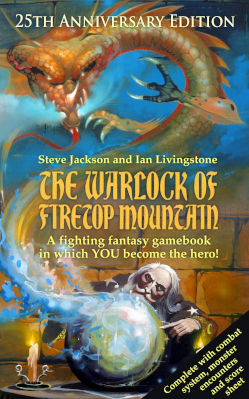
Fighting Fantasy is a series of single-player role-playing gamebooks created by Steve Jackson and Ian Livingstone. The first volume in the series was published in paperback by Puffin in 1982.

Talisman: The Magical Quest Game is a fantasy-themed adventure board game for two to six players, originally designed and produced by Games Workshop. The game was first released in 1983 and has gone through three revisions. As of 2021, the fourth edition (2008) is the latest version. The board game sold over 800,000 units by 2000.

In some role-playing games (RPGs), alignment is a categorization of the moral and ethical perspective of the player characters, non-player characters, monsters, and societies in the game. Not all role-playing games have such a system, and some narrativist role-players consider such a restriction on their characters' outlook on life to be overly constraining. However, some regard a concept of alignment to be essential to role-playing, since they regard role-playing as an exploration of the themes of good and evil. A basic distinction can be made between alignment typologies, based on one or more sets of systematic moral categories, and mechanics that either assign characters a degree of adherence to a single set of ethical characteristics or allow players to incorporate a wide range of motivations and personality characteristics into gameplay.

HeroQuest, sometimes written as Hero Quest, is an adventure board game created by Milton Bradley in conjunction with the British company Games Workshop. The game was loosely based around archetypes of fantasy role-playing games: the game itself was actually a game system, allowing the gamemaster to create dungeons of their own design using the provided game board, tiles, furnishings and figures. The game manual describes Morcar/Zargon as a former apprentice of Mentor, and the parchment text is read aloud from Mentor's perspective. Several expansions were released, each adding new tiles, traps, artifacts, and monsters to the core system.
Warhammer Quest is a fantasy dungeon, role-playing adventure board game released by Games Workshop in 1995 as the successor to HeroQuest and Advanced HeroQuest, set in its fictional Warhammer Fantasy world. The game focuses upon a group of warriors who join together to earn their fame and fortune in the darkest depths of the Old World.

d20 Modern is a modern fantasy role-playing game system designed by Bill Slavicsek, Jeff Grubb, Rich Redman, and Charles Ryan. The system's core rulebook was published by Wizards of the Coast on November 1, 2002; by 2006, ten additional supplements were released. The game is based on the d20 System and the Dungeons and Dragons 3rd Edition ruleset. It includes various campaign settings along with the tools to build campaigns in modern/contemporary settings.
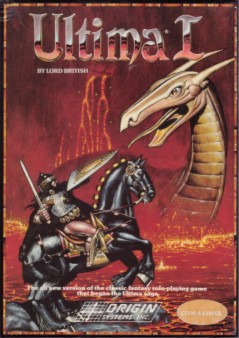
Ultima, later known as Ultima I: The First Age of Darkness or simply Ultima I, is the first game in the Ultima series of role-playing video games created by Richard Garriott, originally released for the Apple II. It was first published in the United States by California Pacific Computer Company, which registered a copyright for the game on September 2, 1980 and officially released it in June 1981. Since its release, the game has been completely re-coded and ported to many different platforms. The 1986 re-code of Ultima is the most commonly known and available version of the game.
Several different editions of the Dungeons & Dragons (D&D) fantasy role-playing game have been produced since 1974. The current publisher of D&D, Wizards of the Coast, produces new materials only for the most current edition of the game. However, many D&D fans continue to play older versions of the game and some third-party companies continue to publish materials compatible with these older editions.
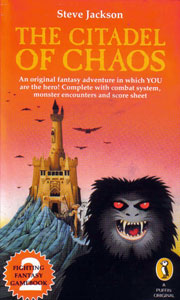
The Citadel of Chaos is a single-player adventure gamebook written by Steve Jackson and illustrated by Russ Nicholson. Originally published by Puffin Books in 1983, the title is the second gamebook in the Fighting Fantasy series. It was later republished by Wizard Books in 2002. The gamebook was also adapted into a video game.
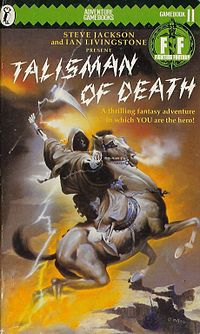
Talisman of Death is a single-player role-playing gamebook written by Jamie Thomson and Mark Smith, illustrated by Bob Harvey and originally published in 1984 by Puffin Books. It was later republished by Wizard Books in 2006. It forms part of Steve Jackson and Ian Livingstone's Fighting Fantasy series. It is the 11th in the series in the original Puffin series (ISBN 0-14-031859-3) and 24th in the modern Wizard series (ISBN 1-84046-566-2).

Dungeonquest is a fantasy adventure board game originally published in Sweden in 1985 by Alga AB as Drakborgen, and subsequently published in English by Games Workshop in 1987.

Dungeon! is an adventure board game designed by David R. Megarry and first released by TSR, Inc. in 1975. Additional contributions through multiple editions were made by Gary Gygax, Steve Winter, Jeff Grubb, Chris Dupuis and Michael Gray. Dungeon! simulates some aspects of the Dungeons & Dragons (D&D) role-playing game, which was released in 1974, although Megarry had a prototype of Dungeon! ready as early as 1972.

The Buffy the Vampire Slayer Collectible Card Game is an out-of-print trading card game based on Buffy the Vampire Slayer. It was released in December 2001 by Score Entertainment. As of January 2004, Score Entertainment no longer holds the rights to this game. Hence, no further production runs or expansions for the game are planned.

Melee is a board wargame designed by Steve Jackson, and released in 1977 by Metagaming Concepts. In 2019, Melee was revived and re-released by Steve Jackson Games.
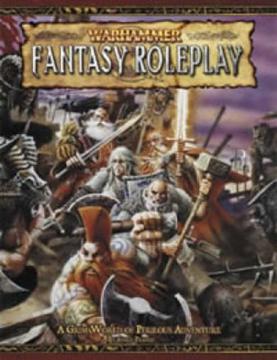
Warhammer Fantasy Roleplay or Warhammer Fantasy Role-Play is a role-playing game set in the Warhammer Fantasy setting, published by Games Workshop or its licensees.
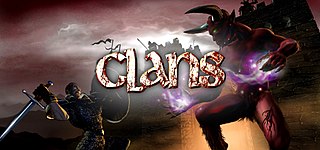
Clans is a 1999 action role-playing game developed by ComputerHouse GBG AB. The game includes some elements from point-and-click adventure games. The game was re-released on Steam in 2014.
The Star Wars Roleplaying Game is a tabletop role-playing game set in the Star Wars universe, first published by Fantasy Flight Games in 2012. It consists of different standalone cross-compatible games where each one is a separate themed experience. The sourcebooks support games set from the Clone Wars era to the original Star Wars trilogy era; there is limited support for the Star Wars sequel trilogy era. Since 2020, the game line has been maintained by Asmodee's subsidiary Edge Studio.
Swordquest is a 1979 board game published by Task Force Games.
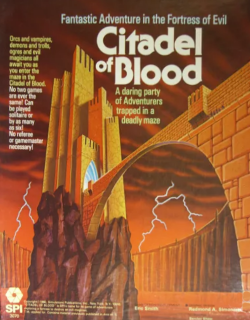
Citadel of Blood, subtitled "Fantastic Adventure in the Fortress of Evil". is a dungeon-crawl board game published by Simulations Publications, Inc. (SPI) in 1980.

Labyrinthine is a fantasy board game published by Wee Warriors in 1977. Based on themes taken from the then-newly published Dungeons & Dragons, Labyrinthine was the first "dungeon crawler" board game to use a totally modular board that was reconfigured for each game.